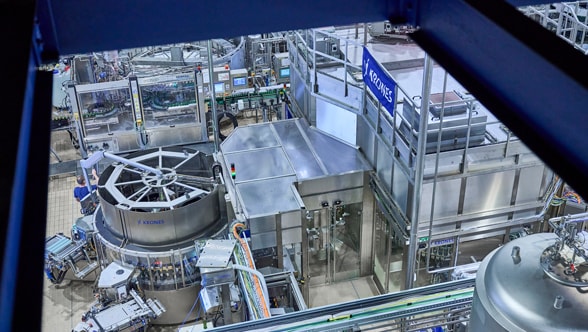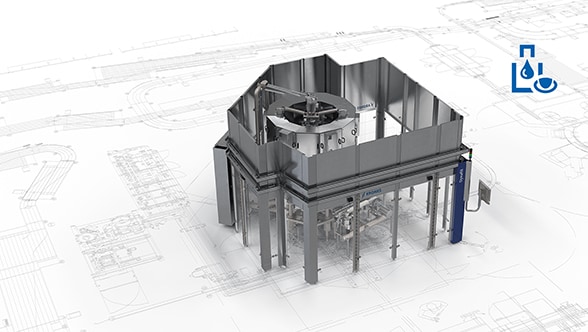The mash is passed into the filter chambers through an exterior mash channel (1). The requirement for low oxygen pick-up during filling is thus reliably met. The exterior-mounted infeed channel provides two advantages: an increase in filtering area and elimination of any components that may affect flow conditions in the filtering area. In combination, they make for homogeneous cake wash-out.
The mash transfer channel to the rear (2) provides the field-proven option for filling the mash filter from the front and from the rear. That is important for achieving uniform mash deposits in all chambers. If one of the main lower infeed channels is blocked, there is also an equilibrium channel (3) to make sure that all chambers are nevertheless filled with solids. In the standard process, wort is discharged through the top (4) and bottom (5) wort channels.
There are likewise two channels (6, 7) for feeding water to the wash-out process. The washing water flows through the boreholes in the water feed pipe (8) onto the membrane’s nubbed surface, from where the water passes through the spent-grains cake during sparging. Similarly, the wort is discharged through the boreholes on the filter plate (9). The washing-water channels also have a second, optional, function: As mentioned above, the new plate design enables two-side filtration for some raw materials. In this case, the washing-water channels serve as additional wort-discharge channels.
Moreover, the type of filter cloth was likewise modified. In future, overhang cloths with a sewed-on sealing edge will be used, which is made of foodgrade PVC fabric. With these overhang cloths, any soiling sprayed through the filter fabric can be swiftly removed via the movable opening at the plate’s bottom, without any clogging.










